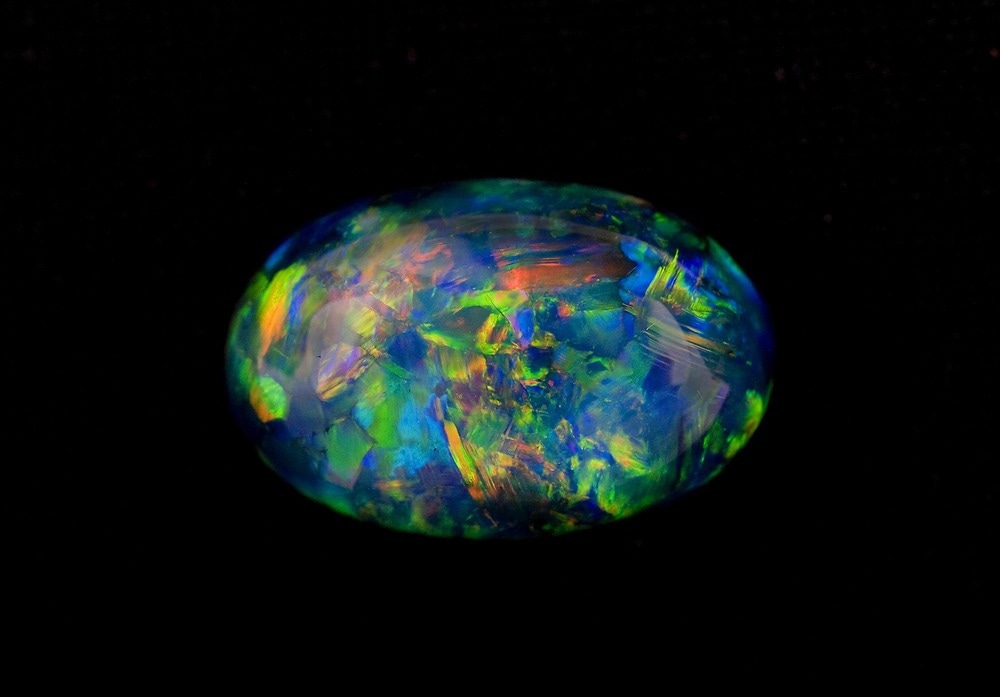The discovery points to a vast subsurface fracture network that may be more habitable for microbial life than the harsh Martian surface.

Image Credit: Paopano/Shutterstock.com
NASA’s Curiosity rover has confirmed the existence of fracture halos containing water-rich opal beneath the surface of Mars. The vast subsurface fracture networks could have provided water-rich conditions and shielding from harsh solar radiation at the Martian surface.
Thus, the findings indicate these fracture networks could have been more habitable on the Red Planet’s surface. It also points to the fact that water as a resource for future space missions could be available in selected spots across areas of the Red Planet previously considered barren.
The Discovery
The discovery from Mars’ Gale Crater came about after a team led by Arizona State University NewSpace Postdoctoral Fellow Travis Gabriel found archival data from Curiosity with anomalies near light-toned rocks. Discovering a huge expanse of fracture halos, fractures in the ground extending far into the distance, came from images Curiosity took early in its traversal of the Gale Crater, which began in 2022.
The team found that the halos spotted early in Curiosity’s mission resembled some the rover had spotted much more recently in completely different rock types. These two sets of halo fractures also shared a similar composition, which includes a lot of silica in the form of opal that still contains water, a vital ingredient for life.
The fact the fractures are composed of opal is significant to the geological evolution of the Gale Crater, believed to once be a lake, because they are rich in water. This high water content produced a strong signal in a Curiosity rover instrument, the neutron spectrometer Dynamic Albedo of Neutrons (DAN).
“Our new analysis of archival data showed striking similarity between all of the fracture halos we’ve observed much later in the mission,” Gabriel said in a statement from Arizona State University. “Seeing that these fracture networks were so widespread and likely chock-full of opal was incredible.”
The scientists examined the composition of light-colored rocks around the fracture halos using drill cores collected by Curiosity. Another opportunity to study these rocks again arose when Curiosity arrived at the Lubango drill site, a bright-toned fracture halo. The findings are published in the Journal of Geophysical Research: Planets.
The Significance of Opal on Mars
Opal forms in situations when silica is in solution with water, similar to the solution created when salt is dissolved in water. If there is too much salt in a solution it begins to settle at the bottom of the water. Similarly, when a solution contains too much silica it begins to settle. This happens in lakes and at the bottom of the ocean or in hot springs or geysers.

Image Credit: Alf Manciagli/Shutterstock.com
On Earth when water runs through sandstone it picks up silica and carries it to natural gaps and faults. The water evaporates leaving a silica deposit and as this cycle repeats, opal is formed over time.
The discovery of opals in faults across the Gale Crater means water would have been available in these tiny subsurface areas which would have been a “safe haven” from the harsh conditions at the surface of Mars. While ancient Mars may have possessed the conditions to support life at its surface, including an abundance of water, modern-day Mars is a different story.
Taking the Gale Crater as an example, temperatures in this dry lake drop as low as minus 100 degrees Fahrenheit (-73⁰C) in the nighttime during Mars’ winter season. Even during the warmest afternoons, temperatures at the Gale Crater only rise to around 30 degrees Fahrenheit (-1⁰C).
Despite its frigid conditions, the Gale Crater is also bombarded with harsh radiation from the sun that prevents the formation of complex molecules. On Earth, life is protected from this radiation by our magnetosphere and thick atmosphere. Mars by contrast lost its magnetosphere and most of its atmosphere billions of years ago.
But subsurface fracture networks could provide shelter from this bombardment of harsh radiation. The team behind this research believes the fracture networks in the Gale Crater could extend to other subsurface areas of Mars, meaning so too could the habitable conditions they provide.
This research also has implications for a future that could see humans on Mars.
Opals and Future Mars Exploration
As the Artemis mission gets off to a flying start, space agencies are looking for future crewed missions to the Moon and eventually Mars. The key watchword of these missions is “sustainability”, and because launching cargo into space is expensive, in situ materials that can be used in longer space missions is vital. One of the most important of these resources is water.
Not only could water be used to sustain astronauts, but it could also be utilized to generate rocket fuel, meaning missions don’t have to carry propellant for a return journey once the fuel-generating infrastructure is in place.
Planetary scientists have been aware for some time that a great deal of water exists frozen at the poles of Mars, but what is less certain is how much water is present across the rest of the planet. For example, the equator of the Red Planet is believed to be “water poor”.
The opal found in fracture halos in the Gale Crater still retains water despite the conditions of modern-day Mars. This indicates that subsurface water existed on Mars much later than it did on the surface. Counter to this is the fact the opal is well preserved and not in a crystalline form, indicating a lack of interaction with water after formation. This means the Curiosity results could help researchers better understand where water is across the surface of Mars and, crucially, where it isn’t.
As for future investigations of these features, Curiosity may be done investigating fracture halos and their opal content. The rover is now moving up to the higher elevations of the mountain that rises from the center of the Gale Crater where fracture halos have not thus far been found.
Curiosity’s co-Mars rover Perseverance could adopt this investigation in a different area of Mars, however, as it roams another site of ancient water, the Jezero Crater, thus confirming the water-rich features of the Gale Crater are common across the surface of Mars.
More from AZoQuantum: The James Webb Space Telescope Investigates New Exoplanet Atmosphere
Reference and Further Reading
T. S. J. Gabriel., et al, ‘On an Extensive Late Hydrologic Event in Gale Crater as Indicated by Water-Rich Fracture Halos,’ Journal of Geophysical Research: Planets, [2022], [https://doi.org/10.1029/2020JE006600]
Disclaimer: The views expressed here are those of the author expressed in their private capacity and do not necessarily represent the views of AZoM.com Limited T/A AZoNetwork the owner and operator of this website. This disclaimer forms part of the Terms and conditions of use of this website.